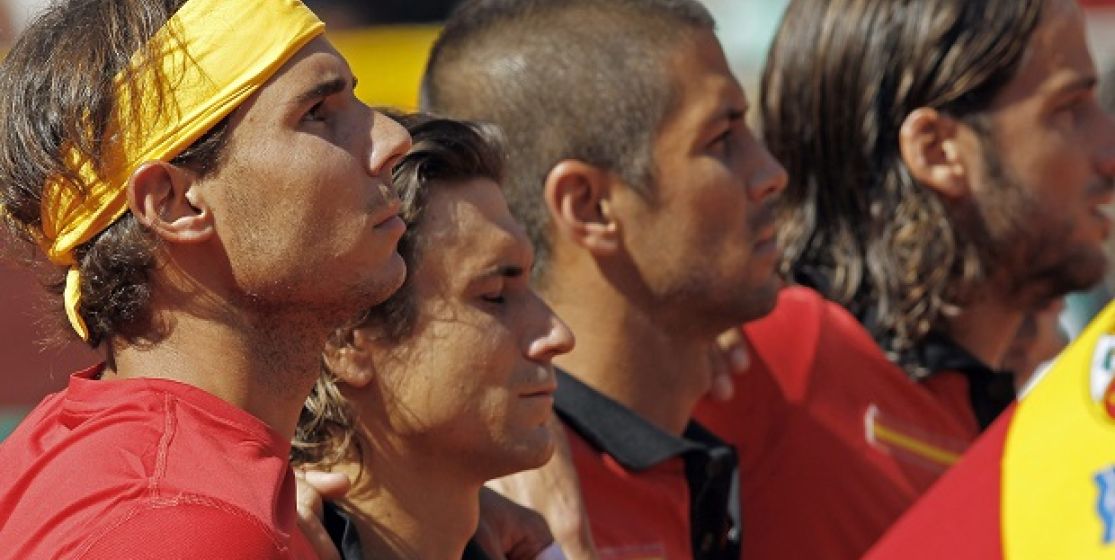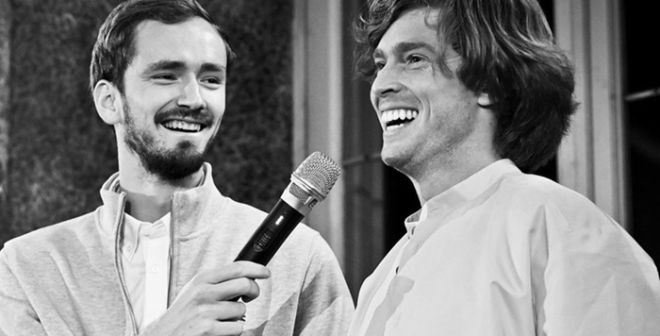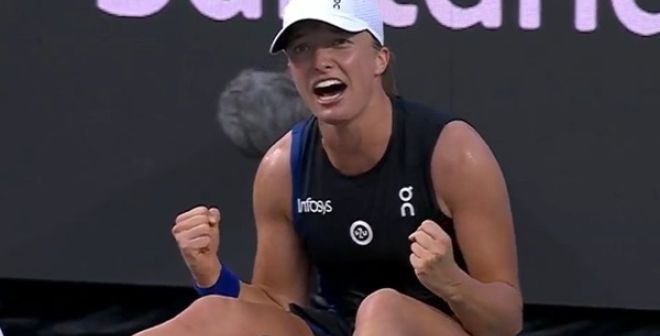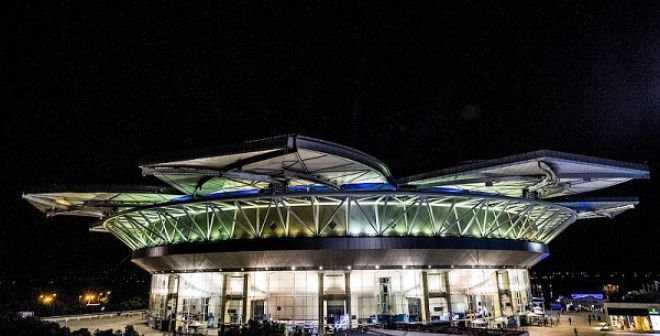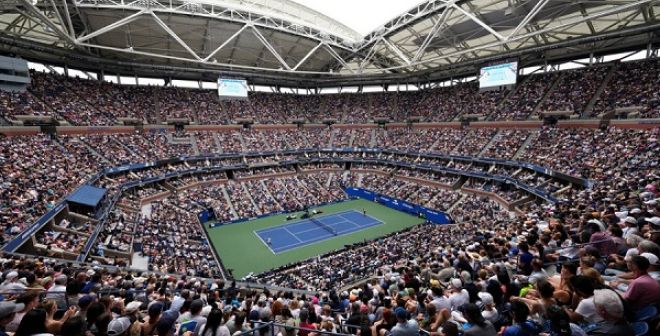Since 1990, there have only been three editions of Roland Garros where Spain didn't have at least one of its own in the semi-finals of the men's or and ladies' singles: 2004, 2009 and... 2015. Because yes: while Rafael Nadal and his comrades Ferrer, Lopez and Verdasco are getting older, and the future looks rather gloomy. The country doesn't even have a single player under 25 years in the top 150. How did Spanish tennis, so glorious during the past quarter century ended up in this situation? Explanations, while this week at Wimbledon shouldn’t help to see more clearly.
1/ The economic crisis…
In Spain, the situation is the same in sport as in almost all other areas: it wasn’t until the late Franco era, in 1975, that the country started to catch up at great speed with the rest of Europe after decades of underdevelopment. The years 1980-90 were those massive investments and, in the wake of obtaining the Barcelona Olympics, sport took its share in financing the training and construction of facilities. As Carlos Moya and Juan Carlos Ferrero before them, Rafael Nadal, David Ferrer, Fernando Verdasco, Feliciano Lopez, Tommy Robredo and Carla Suarez Navarro are the children of this economic dynamism. But since, the 2008 crisis has hit the country. While unemployment rose to 26% of the workforce (and 49% of the under 25!), Sport is no longer a priority. And the more a discipline requires financial investment, the more the public turns away from it, depriving the said discipline of all potential forces able to emerge at high level but also of much needed cash flow to preserve the clubs' academy - a double punishment, somehow. Between 2009 and 2013, some sports have experienced a real blood-letting in Spain: canoeing went from 35 000 to 6 400 licensees, snow sports and ice from 16 000 to 3 000... Even the historic pelota wasn’t spared (from 20 000 to 12 250). Even if tennis is far from being bled dry, it did falter: from 110,050 licensees in 2009, it fell to 89,830 in 2013 (-18.4%), the lowest number recorded since 2002.
2/ … and the offers explosion
It is well known: the best motor of a sport, is a champion that children can identify to. Rafael Nadal was that man for a decade, more than any other tennis man or woman before him. But the competition was tough with the overall raid conducted by all Iberian sports: football, basketball, cycling, motor sports... With Xavi Hernandez, Andres Iniesta, Iker Casillas, Pau Gasol, Alberto Contador, Alejandro Valverde, Fernando Alonso, Jorge Lorenzo and Marc Marquez, Spanish youth found many heroes with whom they could identify not to mention the boom of extreme sports and some of its stars, like the ultramarathon racer Kilian Jornet. Big difference though: even in this context of gloomy economy, the federations of football, basketball, cycling and motorbike have all used their respective Champion(s) to increase the number of licensees: from 780 000 to 855 000 for football, 385 000 to 400 000 for basketball 54 000 to 65 000 for cycling and 17 400 to 17 800 for motorbike, the most expensive Sport of the quintet. Only tennis appears in negative over the last five years... In fact, its greatest enemy may be coming from within: paddle, this racquet sport derived from tennis, but funnier because more directly addictive than the demanding yellow ball. In the period which saw tennis lose 20,220 licensees, paddle gained almost as many (16 589) from 26 723 to 43 312. Causal link?
3/ The big family of Spanish tennis hasn't stopped tearing each other apart
Not only Spanish tennis figures show that the base of the pyramid is weakened but, internally, conflicts keep breaking out between the federation and the pros. The current dispute over the appointment of Gala Leon Garcia at the head of the national team of Davis Cup by BNP Paribas is just another battle in the open warfare started with the previous generation, Carlos Moya and the former President of the RFET, Pedro Muñoz, who even ended up insulting each other in the press. The reason? The power. Historically, the national team, has always been held by the players. And since the federation is trying to challenge this fact - the Davis Cup is after all the main income of Spanish tennis – everything started to go wrong: the players accused the executives of not promoting enough those who are on the court, when the federation retaliate by decrying their spoiled stars behaviour. A poisonous atmosphere therefore, a waste of energy as well... Not to mention the deplorable image reflected to the public. The paradox is that private academies don't even benefit from this situation. If young foreigners courses still operate at full capacity (many centres created by former Spanish professionals have an excellent international reputation), the formation of long-term national hopes has been struggling. At the end of the day, the potential successors of Spanish champions are only very few, and not that young: Pablo Carreno Busta, Munar Clar Jaume (stamped RFET), Maria Teresa Torro-Flor (academy of Juan Carlos Ferrero) and Paula Badosa Gibert (academy Pro-Ab of Barcelona) and a potential great champion Garbine Muguruza (who started in Venezuela but trained from adolescence at the Bruguera academy). One look at youth level below confirms the trend, since there is only one boy and one girl among the 50 best in the ITF junior rankings... The phenomenon doesn’t seem to be temporary.
4/ The role of chance
There is nothing that a top athlete hates more than chance. Yet no one can ever completely eradicate this element of uncertainty, sometimes inexplicable. So yes, a country that has created a genius athlete has no assurance of finding the magic formula again. Simply because at the basis of everything, there’s this one truth: a champion cannot be manufactured. He just is. He has this deep desire anchored deep within him. And if his technical and physical abilities are up to his ambition, no matter that our man (or woman) comes from an exceptional course whatever it is federal, private or sometimes even academic: whatever the accompanying structure, the champion always emerge. But it is still necessary for the starting material to be there, that it already exists... Because, by definition, legendary athletes don’t grow on trees, and because a teenager with an extraordinary athletic potential will not necessarily choose tennis (almost all tennis players say that they have dreamed of becoming a football or basketball player). Why did Björn Borg spawned Stefan Edberg and Mats Wilander in direct line, when these two, yet also immense champions, only inspired a handful of players on the road to the elite? And why Spain, devoid of any major champion since the 1970s, has suddenly exploded in the wake of Arantxa Sanchez and Sergi Bruguera twenty years later? That's why, ironic paradox, the greatest player in the history of Spanish tennis with his 14 Grand Slam tournaments, maybe the greatest player of clay courts ever seen, might be the one that will also close a glorious national chapter, a quarter century long chapter.


